
The Acropolis of Athens is a massive archaeological site brimming with the spiritual, artistic, and democratic wonders of ancient Greece, but with every turn, one comes across a new monument. So how does one know what is actually worth visiting?
Thought to be inhabited as far back as 5,000 BC, the Acropolis and its monuments largely remain in suitable condition to this day. In the eighth century BC, the people of Athens dedicated the hill to the goddess of wisdom and military victory, Athena.
Through the ages, as Athens blossomed from a mere settlement village to a large powerhouse in the region, Pericles, who ruled during the golden age of Athens (450 – 400 BC), sought to promote the Acropolis as an exhibition of Athenian pride.
Under Pericles’ leadership, the Acropolis grew from a handful of temples, damaged by the Persians in 479 BC, to a beacon of Classical architecture and symbol of greatness.
Top Monuments to See at the Acropolis of Athens
Archaeological ruins at the Acropolis include temples, statues, sanctuaries, altars, theaters, and even fountains. If you visit, it’s well worth taking the time to appreciate some of the more remarkable sites.
1. The Parthenon

The champion of the Acropolis must surely be the Parthenon, which, according to Andrew Stewart’s book One Hundred Greek Sculptors, Their Careers and Extant Works, was designed under the direction of Pericles in the fifth century BC by the ancient architects Phidias, Iktinos, and Callicrates.
The mighty structure lies on the highest ground of the Acropolis and served a dual purpose. Firstly, it was built to house the great statue of Athena, commissioned by Pericles and designed by Phidias and his team of sculptors. Secondly, it was to act as a treasury. The Parthenon was built in the vicinity of at least three earlier temples dedicated to Athena.
The Parthenon is comprised of eight fluted Doric columns at either end, with seventeen on each side. A great amount of the frieze—which depicted the Panathenaic Procession—within the temple, was damaged during a gunpowder explosion in 1687. The Turks had used the Parthenon to store ammunition, and when the Venetians launched a mortar at it, part of the structure crumbled.
Prior to this, the Christians had defaced a number of the pieces of the frieze, but the largest existing part is made up of the Parthenon Marbles, which were taken by Lord Elgin and are now on display in the British Museum.
2. Erechtheion
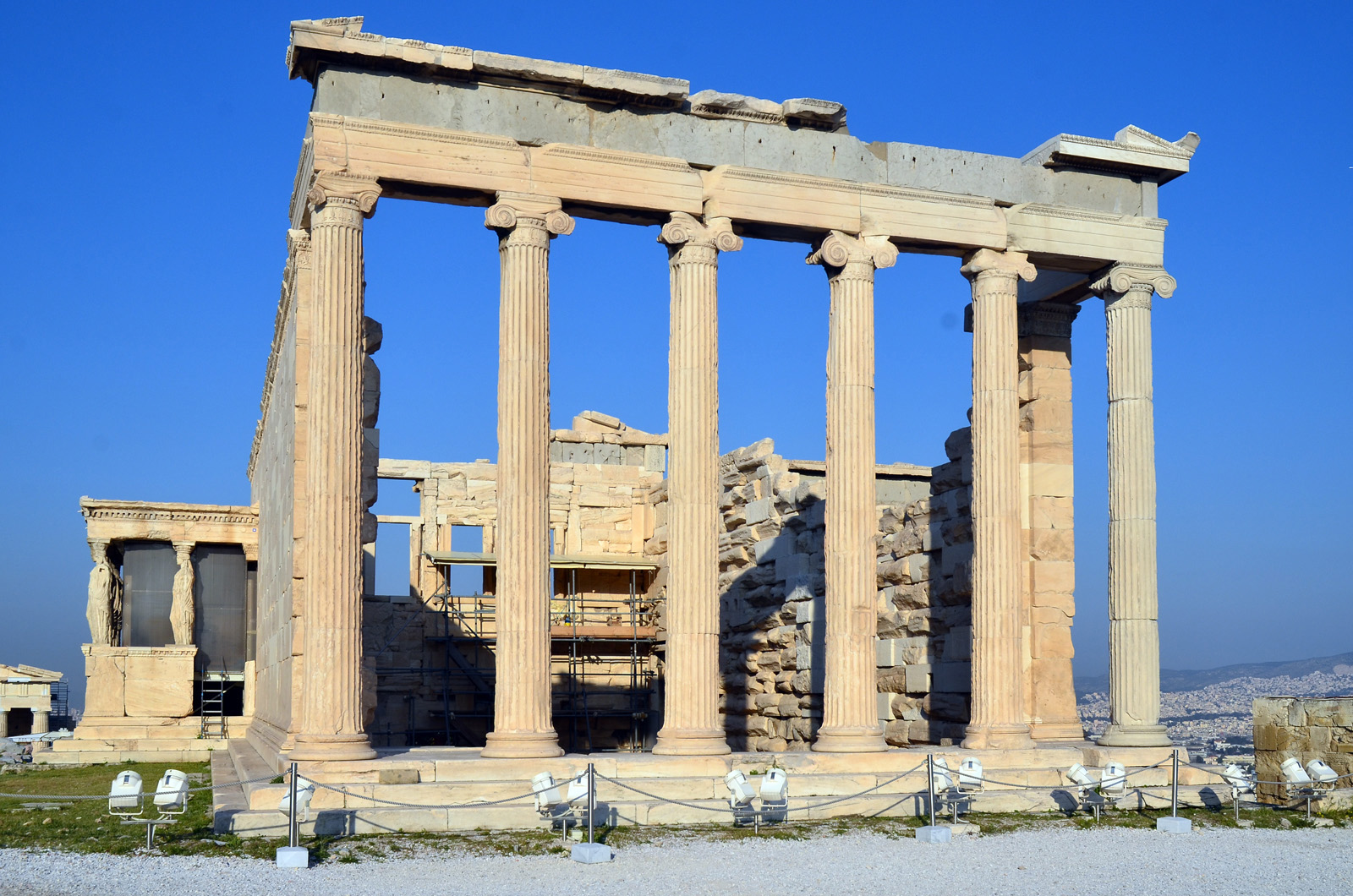
This complex building on the Acropolis of Athens was designed by the ancient Greek architect Mnesikles and built in the last twenty years of the fifth century BC. According to the Acropolis Museum, the structure replaced the Archaios Neos, or ancient temple of Athena Polias, which was partly destroyed by the Persians sixty years prior.
The new temple was divided into two chambers, an eastern room dedicated to Athena which housed the goddess’s wooden cult statue, and a lower western room which accommodated shrines of Poseidon-Erechtheus, Hephaistos, and Boutes, the brother of Erechtheus.
It is generally understood that the temple’s strange shape is the result of its architect’s desire to accommodate all of these cults within one building, while also making the structure adaptable to the uneven surface it sits on.
3. Temple of Athena Nike
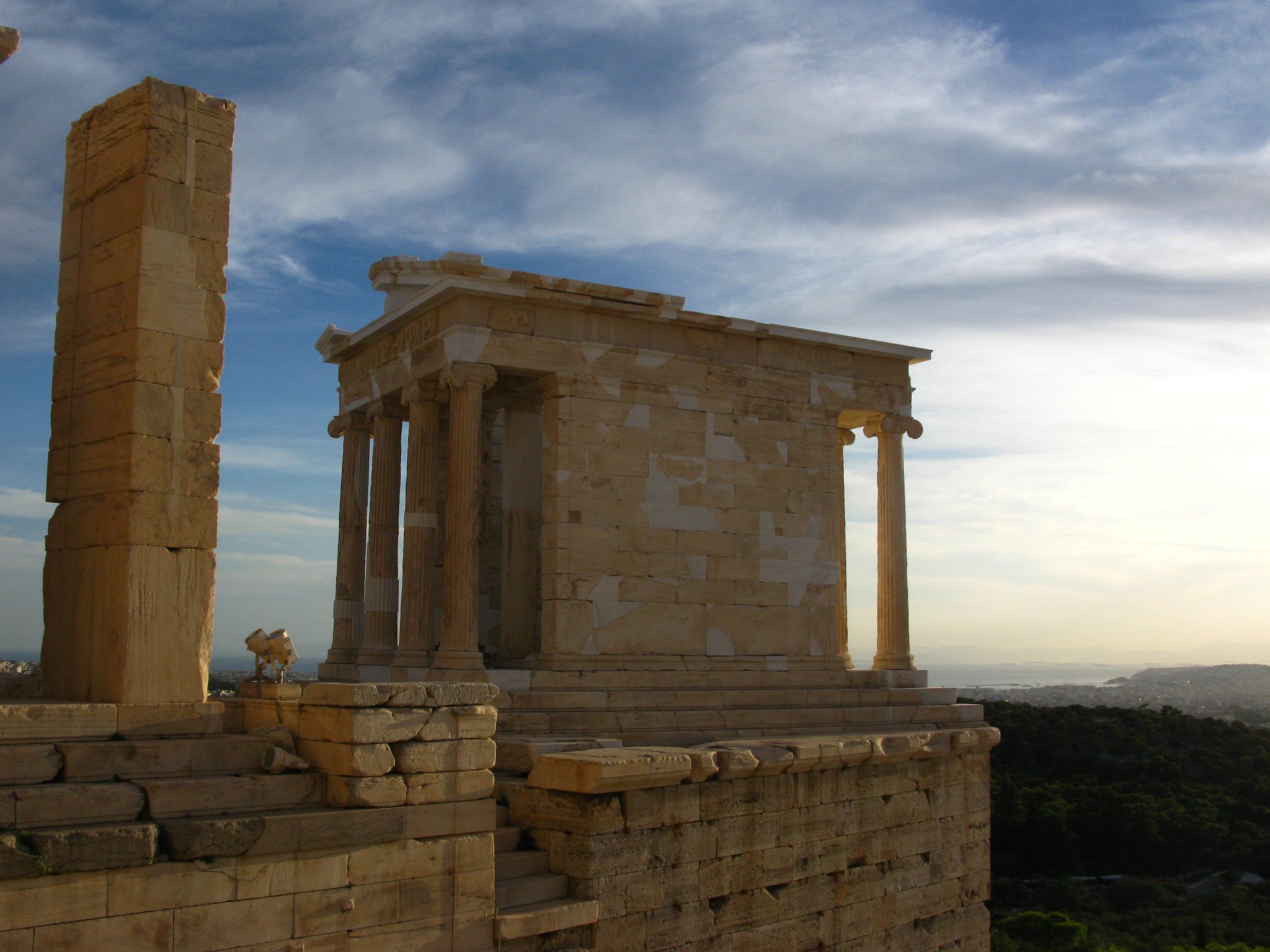
This marvelous monument on the Acropolis, designed by one of the architects behind the Parthenon, Callicrates, was constructed between 426 and 421 BC on the southwestern edge of the great hill. It is the earliest fully Ionic temple on the Acropolis.
The small temple had a frieze etched into it with a relief of various themes along each side. On the east, there was a gathering of gods around Zeus sitting on his throne, while the other sides displayed war scenes between Greeks and Persians as well as between various Greek groups.
The south side of the temple depicted the great battle of Marathon in 490 BC, when the Greeks, led by the Athenians, became victorious against the Persians. The temple is dedicated to the goddesses Athena, who represented both victory and war, and Nike, the goddess of victory.
4. Propylaea
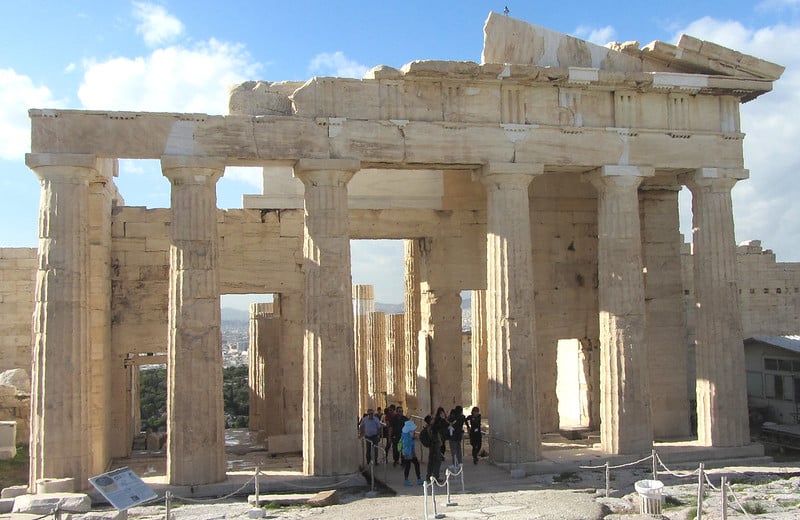
In ancient Greek architecture, a propylaeon (singular form) is a monumental gate that usually leads to a temple or religious complex. In this case, Pericles had the gates commissioned as the entrance to the Acropolis.
These propylaea were designed to be wide enough to allow chariots to pass through, and the construction was part of Pericles’ rebuilding program for Athens after the Greco-Persian Wars.
Construction of this great entranceway began once the Parthenon was nearly completed. It was supervised by the Athenian architect Mnesicles, and, although work was halted due to the Peloponnesian War, the central parts of the architect’s work were nevertheless completed.
5. Odeon of Herodes Atticus
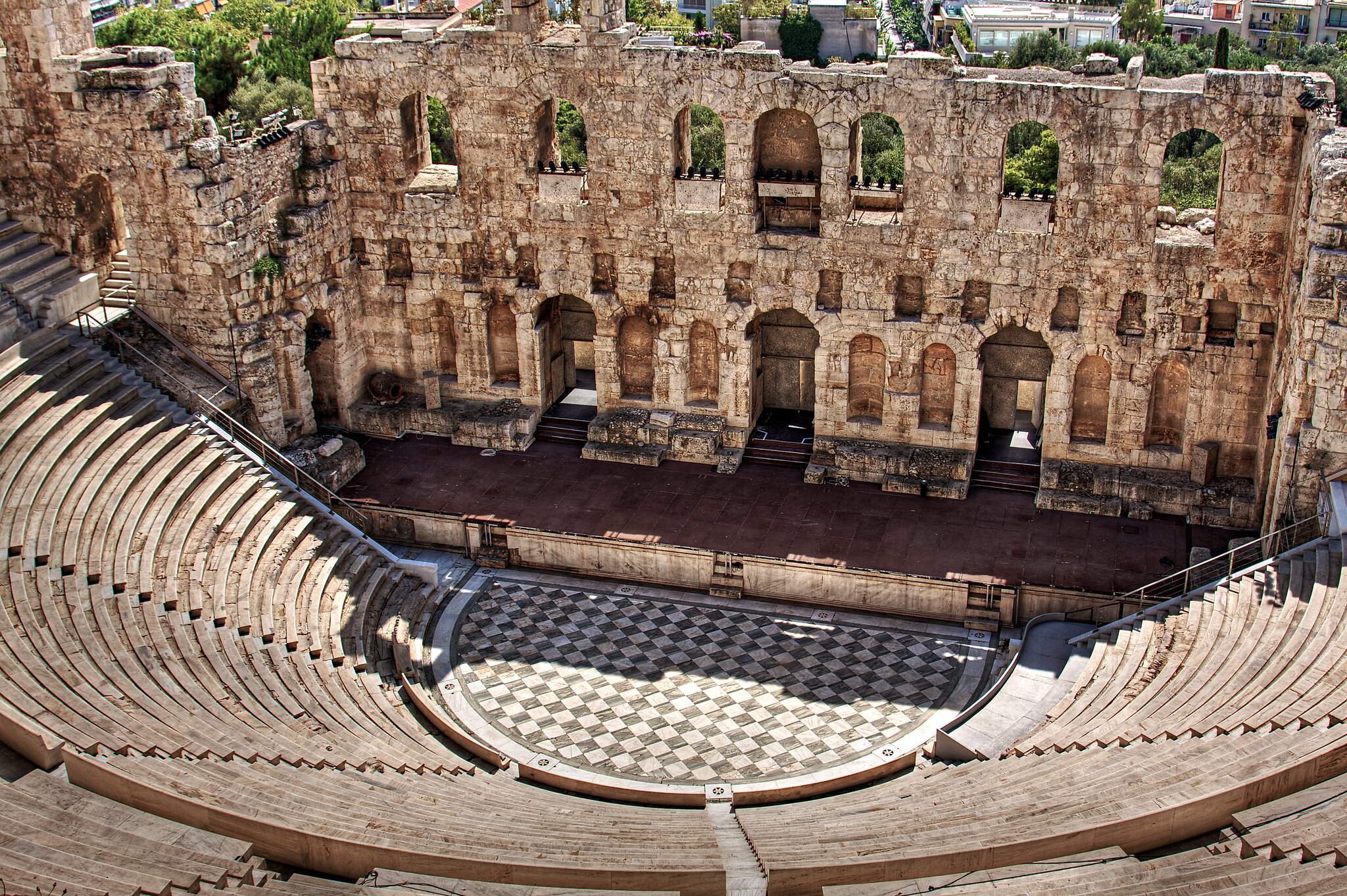
Located on the southern slopes of the Acropolis, this amphitheater was built in 161 AD by its namesake in memory of his Roman wife, Aspasia Annia Regilla. It was utilized as a venue for music concerts. With a capacity of around five thousand, it remained intact until its demise by the early Germanic Heruli in 267 AD.
In more recent times, the audience stands and stage have been restored using Pentelic marble. Since then, the site has been the primary venue of the Athens Festival. In 1957, Maria Callas performed at the Odeon during the festival. Moreover, that same year, Edith Hamilton was pronounced an honorary citizen of Athens there at ninety years of age. Frank Sinatra has also played at the venue.
6. Theatre of Dionysus
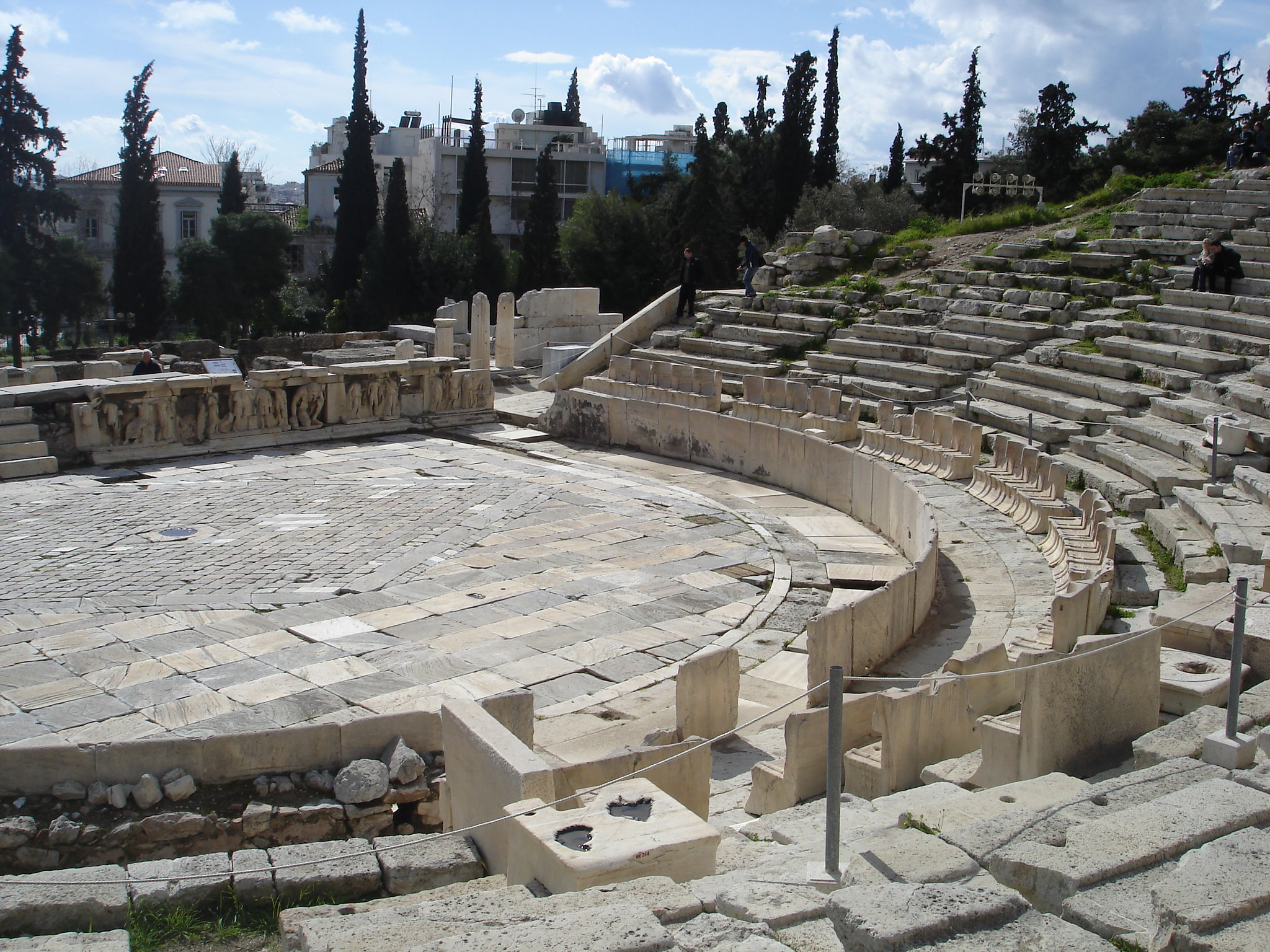
This ancient Greek theater is thought to be the prototype for others that followed. It is located on the southern side of the Acropolis and has the honor of being the place where all Classical Greek plays were first performed.
Construction at the site began with the orchestra, the circular stone base of around sixty feet in diameter. There is a raised altar in the middle. Used for dramatic plays that were part of the annual spring festival of Dionysus, it was positioned next to temples of nature and the fertility god Dionysus.
During the fifth century BC, the theater was used for theatrical contests during which the plays of Sophocles, Euripides, Aeschylus, and Aristophanes were first performed.
7. Stoa of Eumenes

The path from the stage of the Theatre of Dionysus leads uphill and westward to the top of the long Stoa of Eumenes. This is a colonnade donated to Athens by Eumenes II, king of Pergamum from 197 to 159 BC, as a shelter and promenade for audiences of the theater.
The Roman architect Vitruvius referenced the structure in speaking about the purpose of stoas. These were constructed near theaters and served as shelter for audiences during inclement weather. Alternatively, they housed theater props.
The level of the stoa floor in ancient times has, by now, been restored. Several of the monument’s pillars on the ground floor remain on the Acropolis.
8. The Caryatids (Porch of the Maidens)
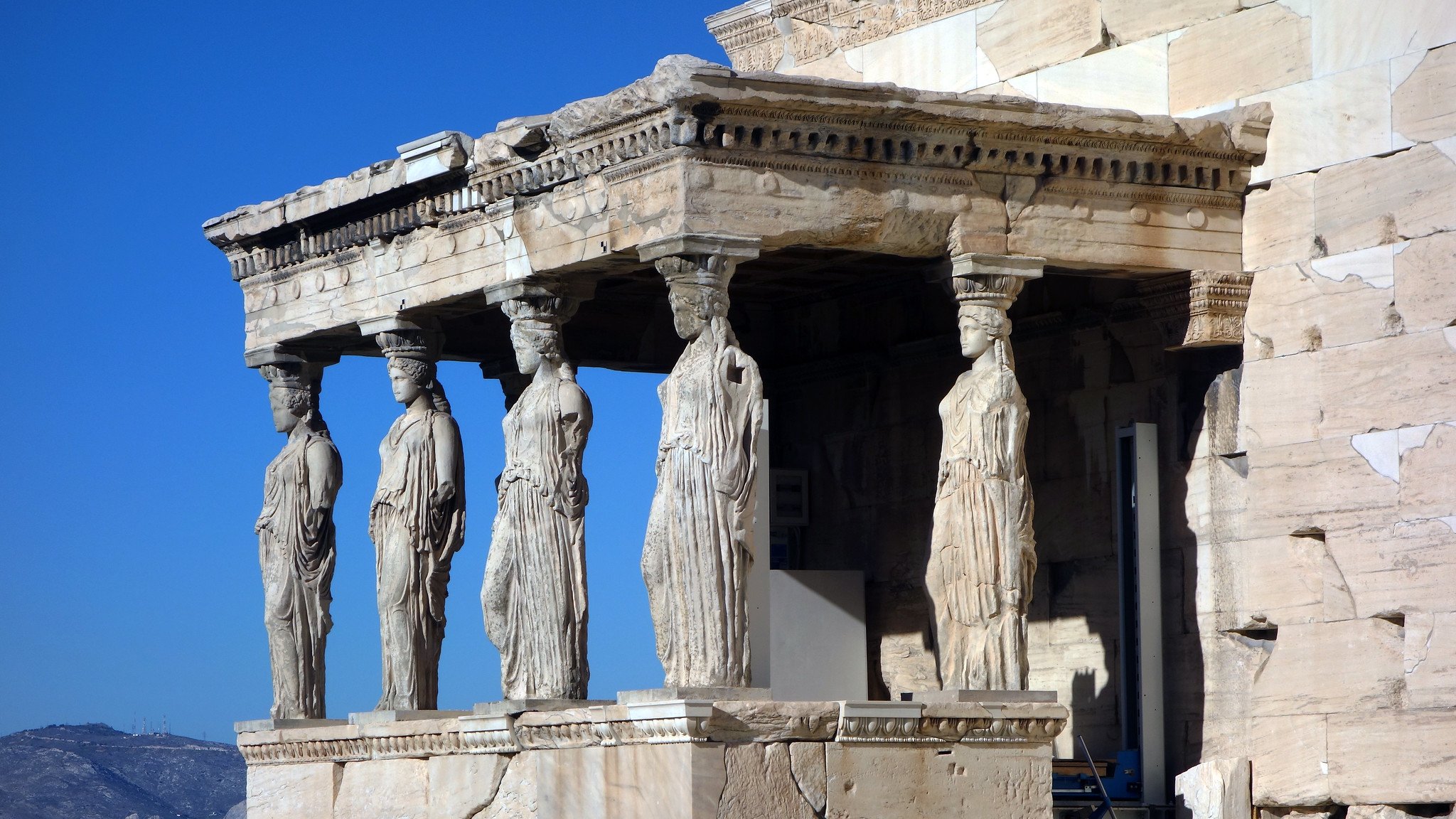
This presentation of statues, also know as the Porch of the Caryatids, comprises the west end of the south side of the Erechtheion temple. The large caryatid statues now visible on the Acropolis site are reconstructions. Most of the original pieces are on display in the Acropolis Museum.
The gap in the museum’s display is for the ‘missing sister,’ the original having been removed by Lord Elgin and put on display in the British Museum in London, where it has remained since 1817.
A Caryatid is a sculpted female figure that serves as an architectural support, replacing a column or pillar and supporting an entablature on her head. The Greek term Karyatides literally means “maidens of Karyai”, an ancient town on the Peloponnese. Karyai had a temple dedicated to the goddess Artemis in her aspect of Artemis Karyatis. As Karyatis, Artemis, rejoiced in the dances of the nut-tree village of Karyai, those Karyatides who, in their ecstatic round-dance, carried baskets of live reeds on their heads as if they were dancing plants.
9. Beulé Gate

This is a fortified gate built during the Roman period, leading to the Propylaea monument of the Acropolis. It was constructed mostly from repurposed materials from the Choragic Monument of Nikias, a structure built in the fourth century BC and demolished around six hundred years later. The inscription from Nikia’s monument is still visible on the upper part of the Beulé Gate.
10. Sanctuary of Zeus Polieus
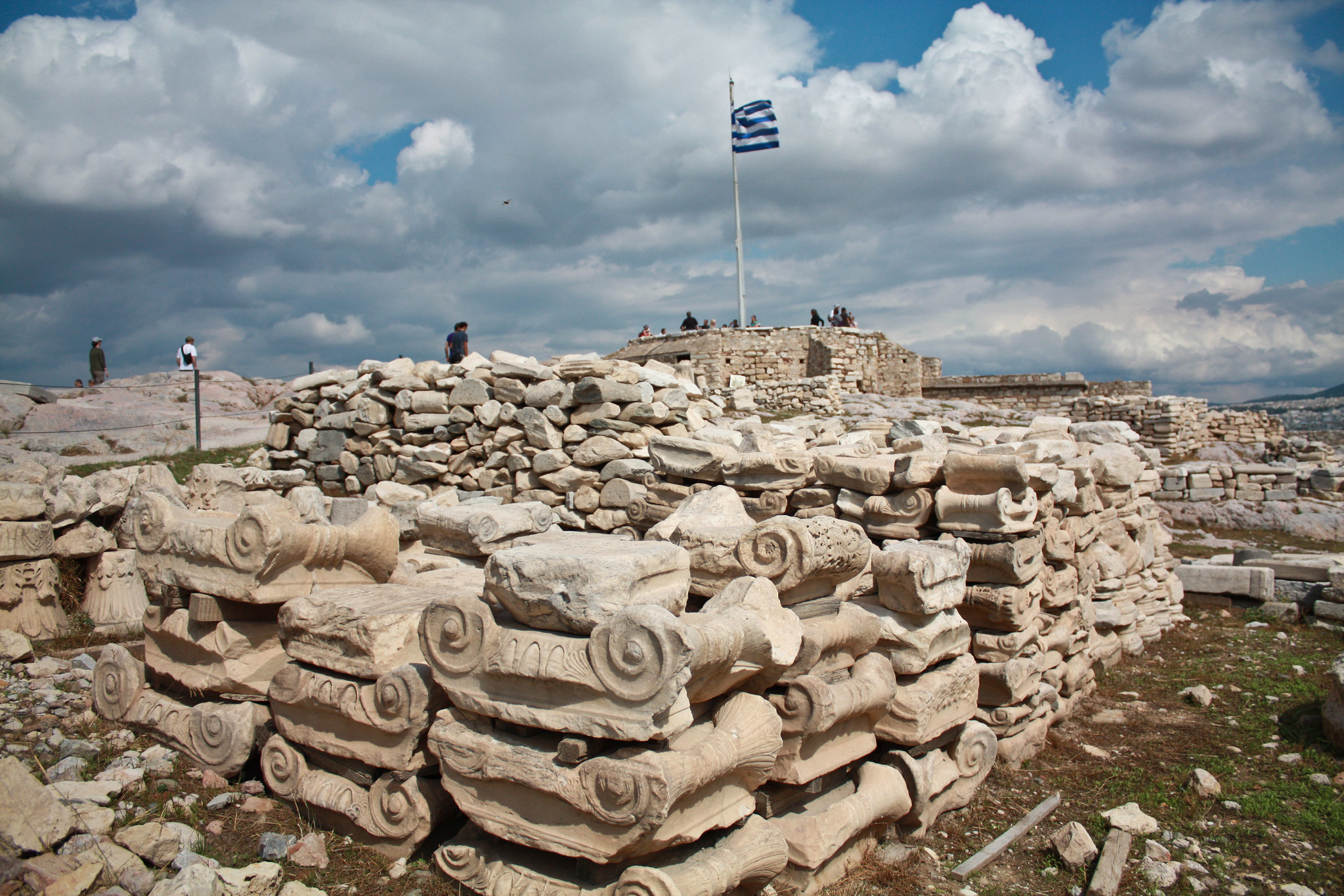
The Sanctuary of Zeus Polieus was a columned, open-air sanctuary, as per the name, on the Acropolis. It was dedicated to Zeus Polieus, the city protector, around the year 500 BC. Located to the east of the Erechtheion, none of its foundations have been recovered. Its many entrances and ground plan were worked out from rock cuttings on the Acropolis.
The eastern range of the sanctuary is believed to have housed the oxen for the annual Buphonia or ox-sacrificing.
Pausanias described the sanctuary in the second century AD: “There are statues of Zeus, one made by Leokhares and one called Polieus. Upon the altar of Zeus Polieus, they place barley mixed with wheat and leave it unguarded. The ox, which they keep already prepared for sacrifice, goes to the altar and partakes of the grain.”
“One of the priests they call the ox-slayer,” explained Pausanias, “who kills the ox and then, casting aside the axe here according to the ritual runs away. The others bring the axe to trial, as though they know not the man who did the deed.”
See all the latest news from Greece and the world at Greekreporter.com. Contact our newsroom to report an update or send your story, photos and videos. Follow GR on Google News and subscribe here to our daily email!



